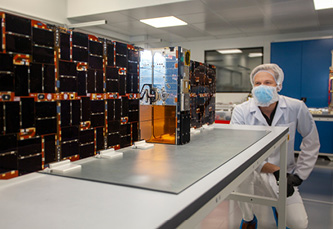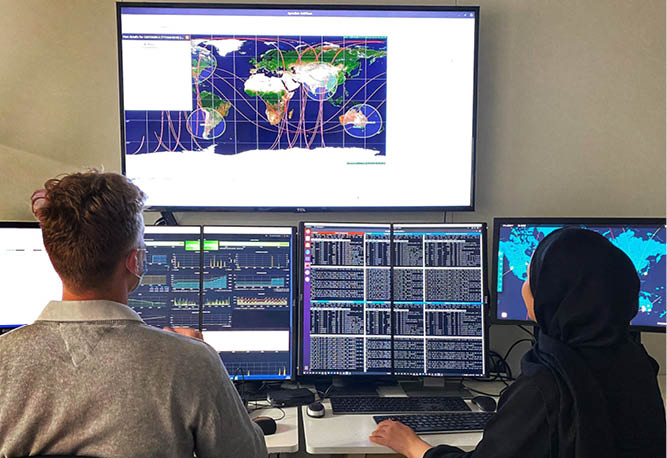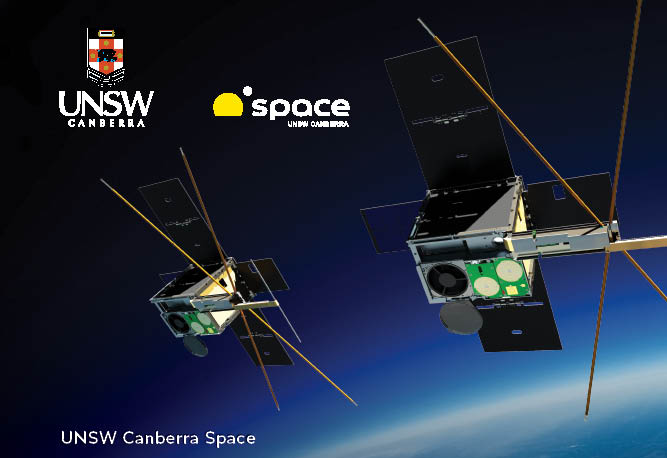The space-for-earth economy is growing rapidly. Space is open for business, and it is more important than ever that Australia takes a competitive position in this growing market and establishes industry sovereignty that will lead to the development of a resilient space sector. To ensure a sovereign space capability it is imperative that satellites, critical to National security, are manufactured, launched and operated from Australia.
The Federal Government is facilitating a sovereign space capability through their $7Billion commitment to space capabilities over the next 10 years. To achieve true space resilience, it is vital for Australia to reduce our dependency on other countries and on foreign commercial providers of space capability.
Playing a large part in the ‘fourth industrial revolution’, this global industry is today worth US$350 billion, with growth forecast to reach US$1.1 trillion in the next 20 years. As a region Australia is following this trend, with predictions that our current market size of $3.9 billion and 10,000 jobs, will grow to $12 billion with jobs tripling to 30,000 by 2030. Enabling this local growth are a number of Australian commercial companies with plans to establish constellations comprising hundreds of satellites. These ambitious plans are possible due to the reduced cost of launches and satellite hardware. With facilities established on Australian soil, costs will continue to decrease, enabling more companies to establish their piece of the space pie. The Australian Space Agency was established in 2018 to help foster this growth, and steer the trajectory of our industry.
One Australian company well on their way to being the nations first operator of a completed, global satellite constellation is Fleet Space. On a mission to change Earth from space, Fleet’s aim is to create a digital nervous system, with the global coverage to connect critical infrastructure, mining and defence with sensor devices on mass. They are deploying Smart Industrial IoT (IIoT) Networks for distributed and remote infrastructure assets, providing an affordable, scalable network. The networks are designed to gather data from every asset or the environment it operates in, no matter its location, 24 hours a day.
Fleet Space is also set to become a major Australian satellite manufacturer, growing from building three hand-built nanosatellites a year to mass-producing 50 per year. Their ability for agile nanosatellite design, development and manufacture, arms them with the ability to adapt and evolve with space capabilities into the future. Having recently launched their sixth nanosatellite, their second this year, Fleet Space is on the path to a 140 unit constellation by 2027.
“At present, every satellite launched by an Australian company is hand-made, and many of the components come from overseas,” says Fleet Space CEO Flavia Tata Nardini. “Our country’s manufacturing rate is very low. Australia lacks many of the manufacturing capabilities its industry needs to build satellite payloads and the satellites themselves. And we certainly can’t produce them in volume. We want to establish these manufacturing capabilities here in Adelaide so that we can kick-start Australia’s space industry.

Fleet Space and its partners aim to develop and manufacture the smartest parts of future satellites right here in Adelaide, and provide an Australian service to a worldwide customer base” says Ms Tata Nardini. “Only a handful of companies worldwide such as SpaceX and Airbus have the capacity to mass-produce satellites. We can join them, if we move quickly.”
A recent grant awarded by the Federal Government will expedite this goal, with the Moon to Mars Supply Chain Capability Improvement grant. This will ensure Fleet Space can continue to be a growing contributor to Australia’s thriving space sector, and play a key role in NASA’s Moon to Mars project, while cementing Australia’s ability to compete in the international space economy. This show of confidence through investing in the space sector will create national supply chains that will be resilient to external shocks. The grant will enable Fleet Space to grow skills and capabilities in the Australian space manufacturing industry, while illustrating a terrestrial application of space technology that can be extended to Moon and Mars activities. These local manufacturing capabilities will also be available to the Australian Defence Force (ADF) as well as to other Australian space companies, adding depth and strength to the entire Australian space sector.
Australian Defence understands the importance of space. Its priority is to fund industry projects that can support a plan for future capability, and is investing $7Billion in space capacity over the next 10 years. Underpinning this commitment, is a safe and reliable sovereign launch capacity, creating long lasting economic opportunities for the domestic market, ensuring Australia’s continued security and growth.

The ADF investment incorporates three major projects, the largest being JP9102, which will provide the Australian troops with resilient and secure communications whilst outside the range of terrestrial communication networks. Defence Project 799 will use satellites to provide Intelligence, Surveillance and Reconnaissance capabilities, gathering information about the enemy and friendly forces. JP9380 helps protect the Position Navigation and Timing capabilities from being corrupted by enemy electronic warfare.
One future strategy for the ADF could be to split the capability of their traditionally large and exceptionally expensive geostationary satellites, into a multitude of smaller satellites. With the emergence of anti-satellite missiles, the geostationary satellites are expensive and vulnerable stationary targets. With capability spread over multiple smaller satellites, the end goal would be to reduce the cost of each of these satellites to be less than the cost of an enemy missile attempting to take it out. Smaller satellites sit within the capabilities of Australian manufacturing, fulfilling the desire of the ADF to have a sovereign satellite manufacturing capability. The ADF has the backing of the Australian Space Agency to grow the industry, with the priority being to fund industry projects that can support a roadmap to future capabilities.
One of the main focus areas for the ADF is access to commercial launch facilities in Australia, allowing the development of a true sovereign capability that would eliminate the requirement to get approval from a foreign nation before a launch. Even with Australian launches taking place in New Zealand, companies are required to seek permission from the US for what is being launched, as well as all of the details pertaining to the launch. Defence’s planned investment in new space capabilities over the next decade will be targeted at building up these sovereign capabilities required to manufacture Australian Defence satellites in the future and phasing out our dependence on the US.
With these sovereign capabilities, Australia’s access to space will become consistent and secured. We will gain independence from other countries for critically important space-based technologies, particularly for national security purposes. If relationships deteriorate with our international partners, Australia will have the means to launch its payloads into orbit, protecting our intelligence, data and security.
Fleet Technologies















